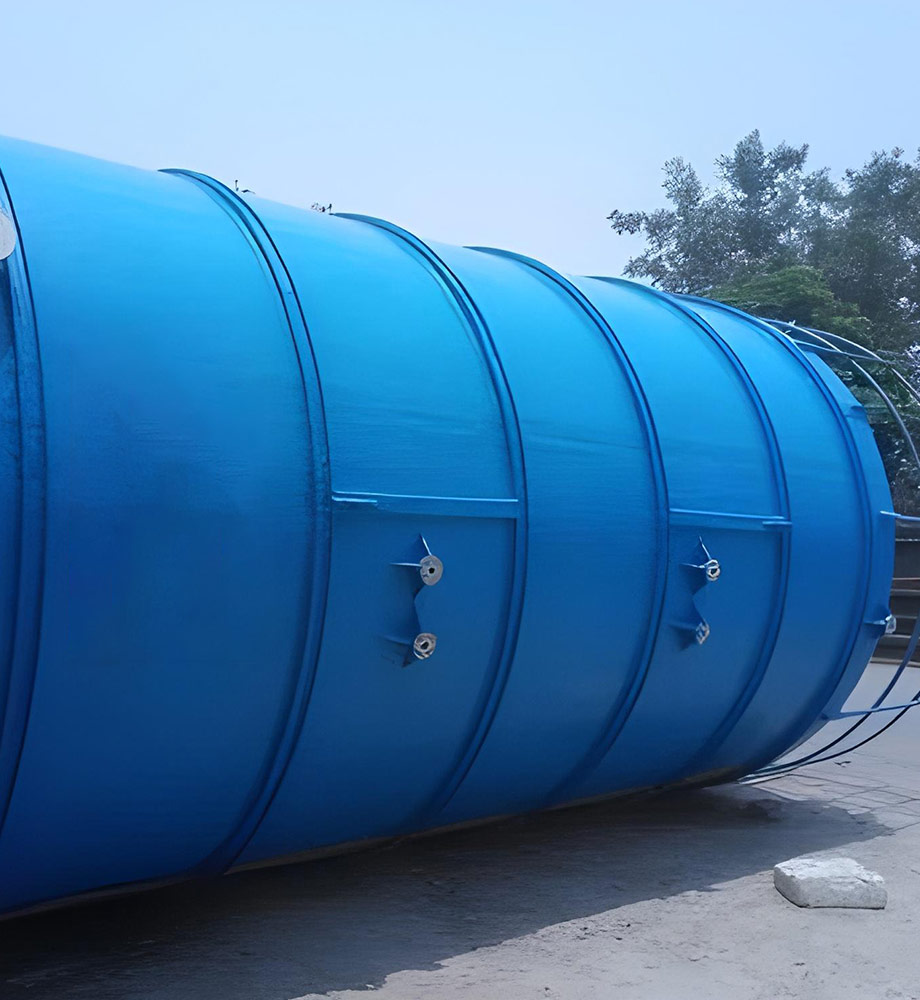Key Features
- Corrosion-Resistant FRP Vessel: Smooth, seamless fiberglass body prevents leaks and withstands harsh, aerated environments.
- Integrated Diffuser Support: Internal FRP or stainless racks hold fine-bubble diffusers or tube assemblies at optimum spacing.
- Custom Configurations: Tanks can be rectangular or circular, open-top or covered, with optional demister sections.
- Lightweight Construction: FRP panels and sections are easier to transport and install than steel, even in large sizes.
Benefits
- Efficient Aeration: Even air distribution promotes uniform microbial growth for reliable BOD/COD removal.
- Low Weight: Lighter than concrete/steel, reducing foundation requirements and lifting equipment.
- Long-Term Durability: Will not rust or corrode like steel tanks, ensuring service life of decades.
Applications
Wastewater treatment aeration basins (activated sludge plants, SBRs, extended aeration, oxidation ditches). Also used for aerated equalization basins and biogas desulfurization scrubbers.
Technical Specifications
Volumes can range from a few m³ up to thousands of m³. Thickness and fiber content of FRP are designed for hydrostatic pressure and dynamic loads (typical wall thickness 6–12 mm FRP laminate). Tanks often built to AWWA D120 or ASME RTP-1 standards. Outlet weir and inlet geometry follow design codes.
Unique Selling Points
Our FRP aeration tanks avoid the cracking and corrosion issues of concrete, and require far less maintenance than steel. We offer turnkey design with integrated diffusers, blowers, and controls, plus modular assembly for staged plant expansion.

